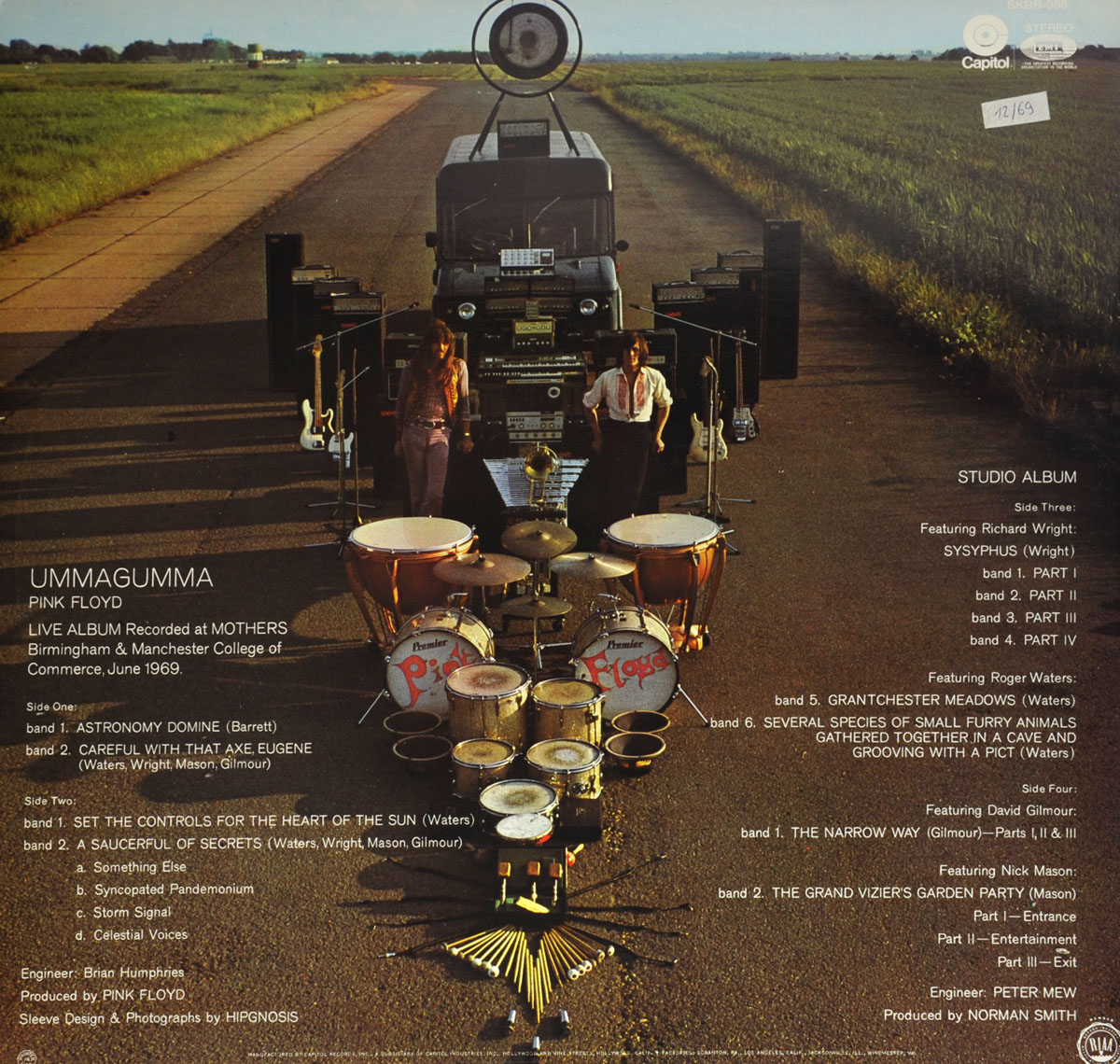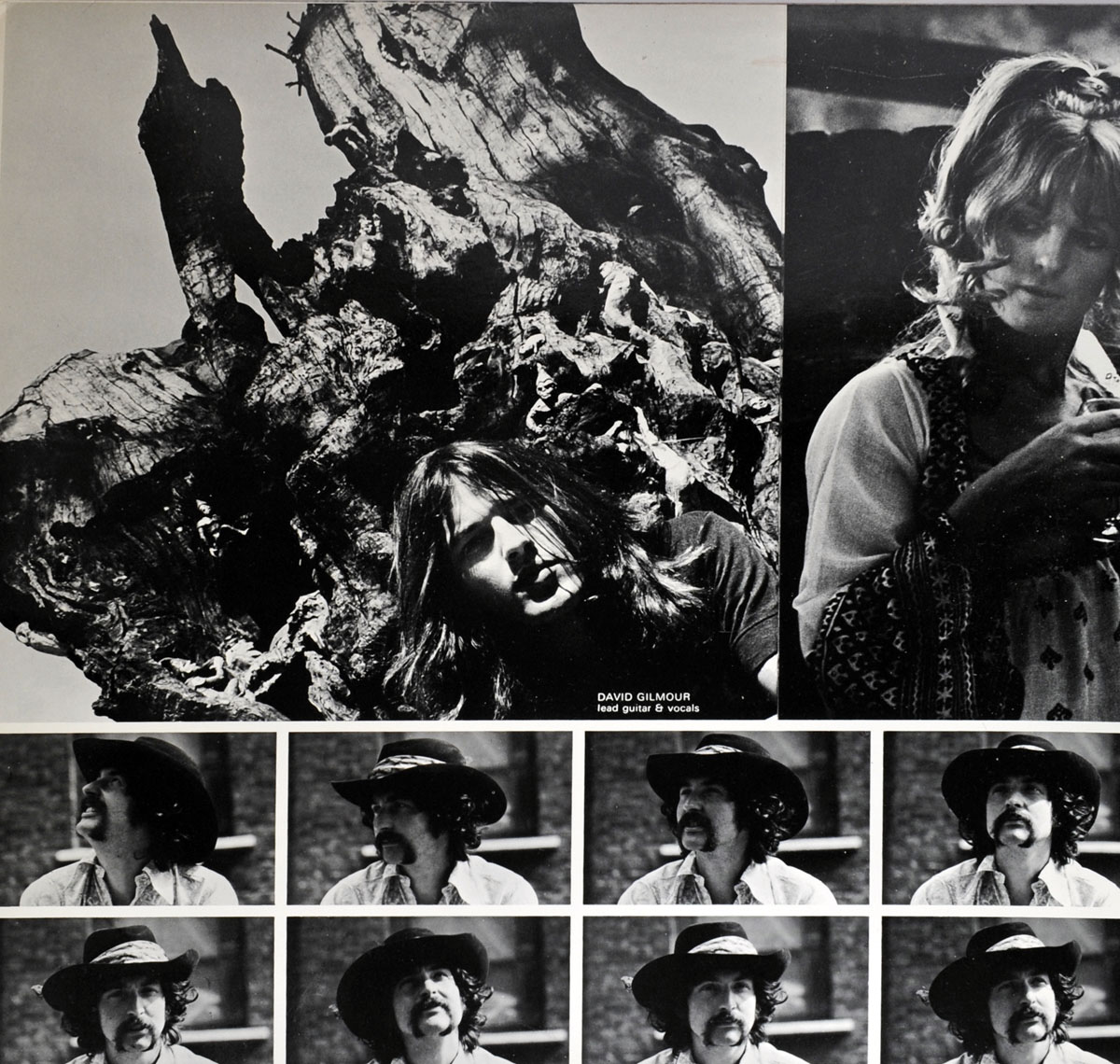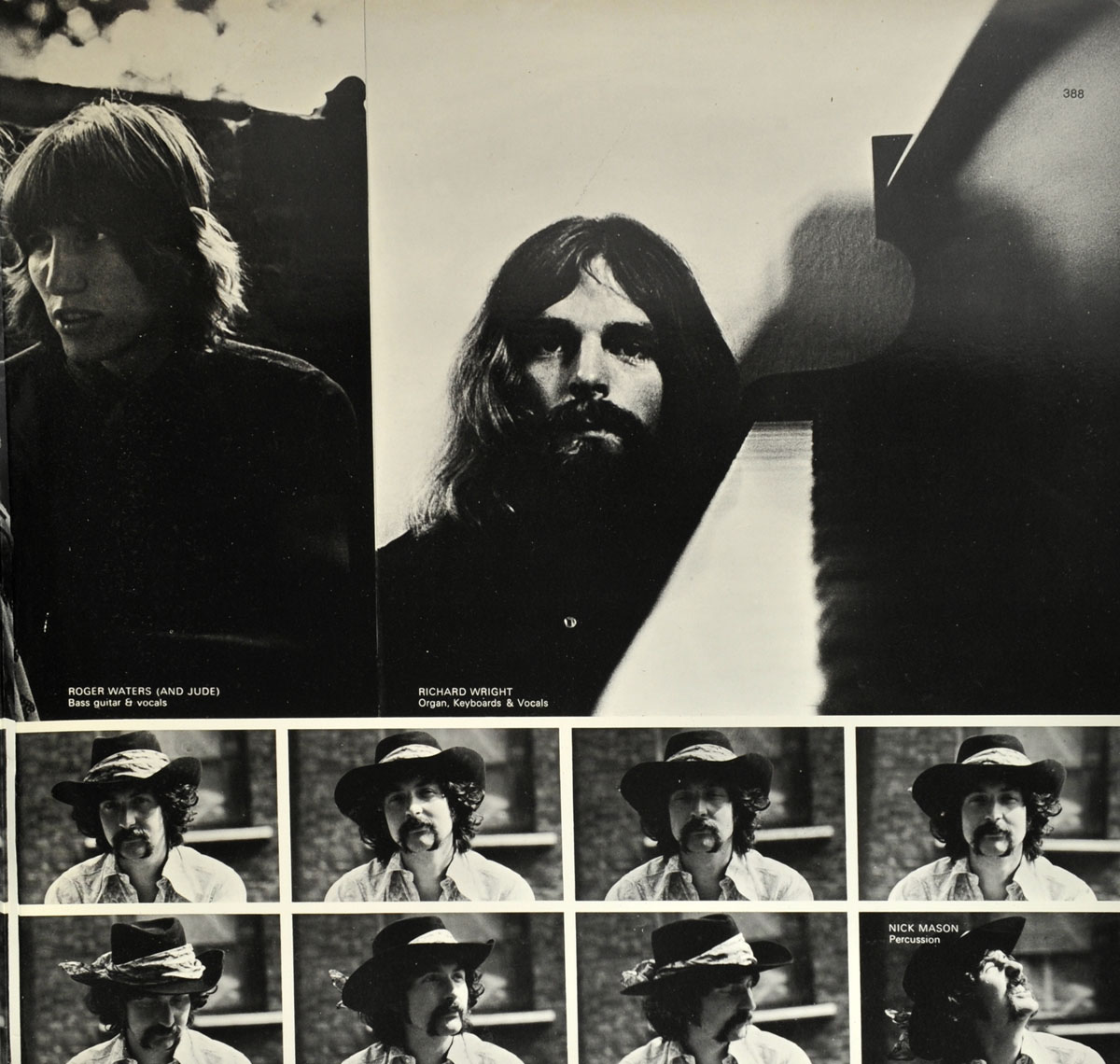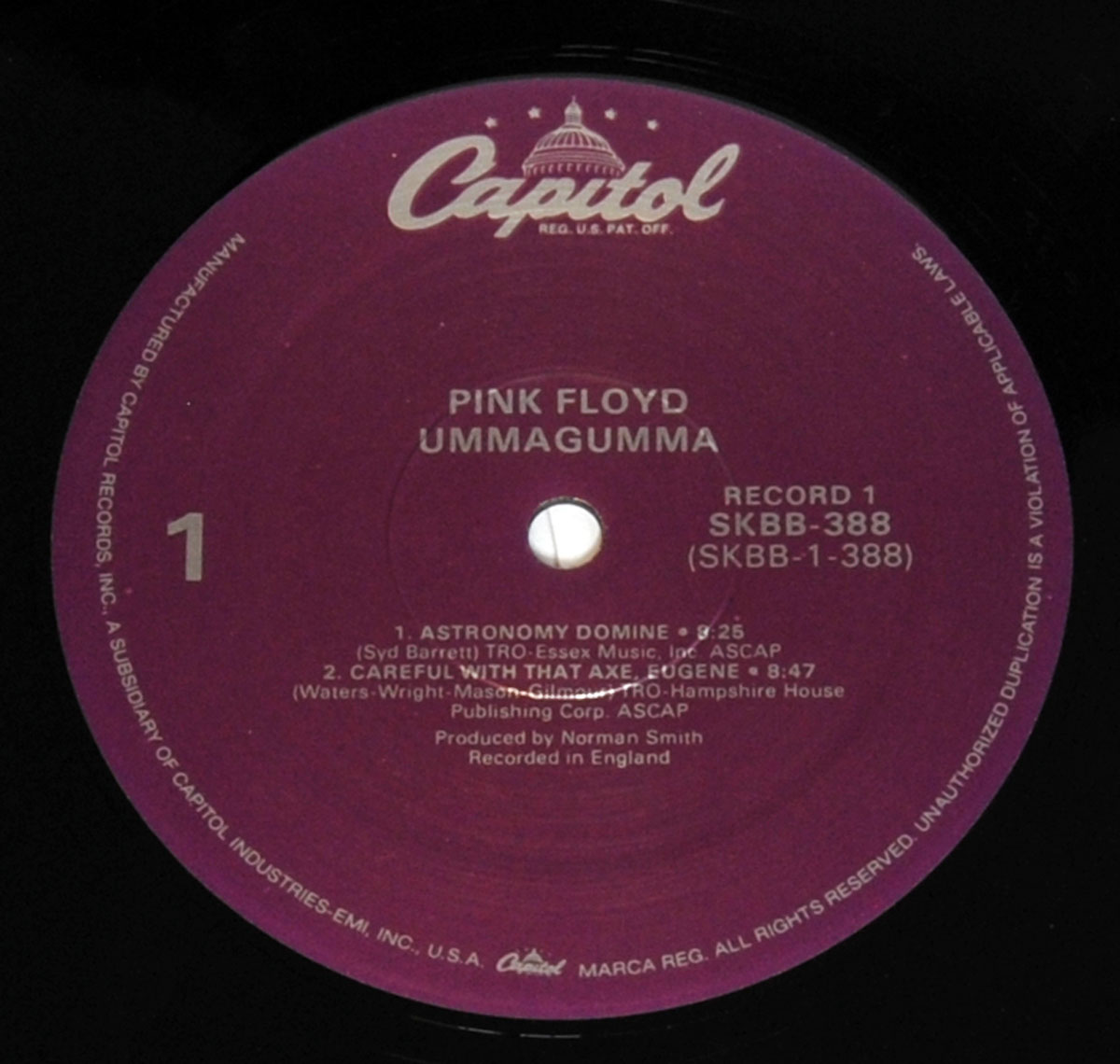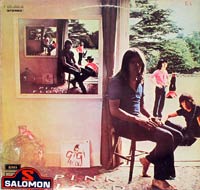"Ummagumma" Album Description:
The American release of Pink Floyd's "Ummagumma" on 12" 2LP vinyl, with its distinct features, stands as a noteworthy piece within the context of the time period in which it was introduced. This particular version, with its erasure of Gigi from the album cover painting, adds an intriguing layer to the overall narrative surrounding the album.
Released in the United States, the album cover design and photography were credited to Hipgnosis, a renowned design group that contributed significantly to the visual aesthetics of many iconic albums during the 1960s and 1970s. The deliberate removal of Gigi from the artwork raises questions about the decision-making process behind such alterations, reflecting the artistic and cultural dynamics of the era.
The content of the album itself further adds to its historical significance. The recording on sides one and two, captured live at the Mothers venues in Birmingham and Manchester College of Commerce in June 1969, provides a vivid snapshot of Pink Floyd's performance during that period. The inclusion of this live recording not only showcases the band's musical prowess but also serves as a time capsule, allowing listeners to experience the energy and atmosphere of those specific concerts.
On the flip side, sides three and four feature studio recordings, highlighting the band's versatility and ability to create compelling music both in a live setting and within the controlled environment of a studio. The engineering work by Brian Humphries and Peter Mew, along with production by Norman Smith, further emphasizes the collaborative efforts that went into crafting the album.
The catalog number, Capitol SKBB-388, and the note indicating "Recorded in England, Printed in USA" reflect the international nature of the music industry during this era. Such details offer insights into the logistical aspects of music production and distribution at the time.
|
Music Genre: Prog Rock, Psych, Acid Rock |
|
Album Production Information:
Side One & Two recorded Live at the MOTHERS, Birmingham & Manchest College of Commerce June 1969,.
Side three and four recorded in the Studio. Engineers: Brian Humpries & Peter Mew.
Produced by Norman Smith
Album Cover Design and Photography by Hipgnosis
|
|
Record Label & Catalognr:
Capitol SKBB-388 |
Media Format:
12" 2LP Vinyl Stereo Gramophone Record
Total Album (Cover+Record) weight: 460 gram |
|
Year and Country:
Recorded in England, Printed in USA |

